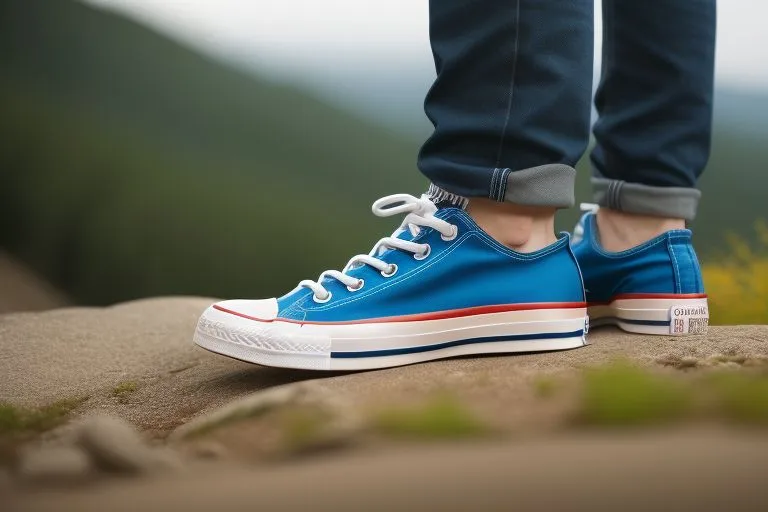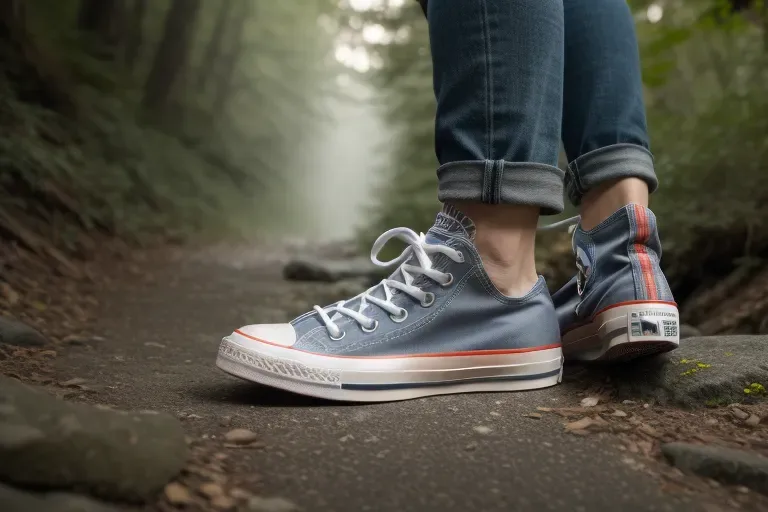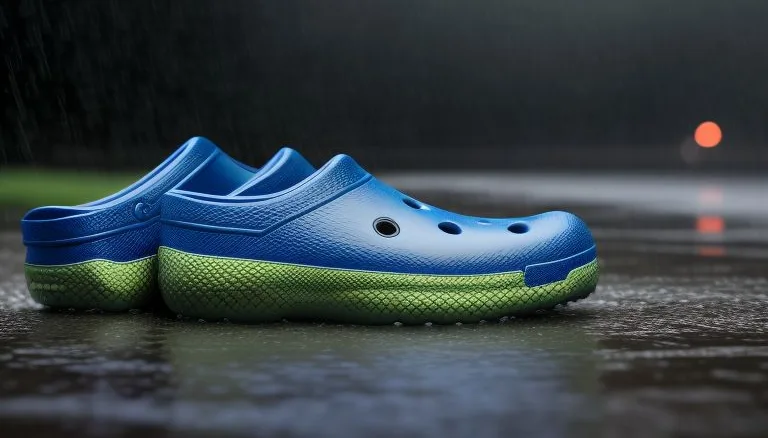Can You Hike in Converse? Exploring the Outdoors
Can You Hike in Converse? – Gone are the days when hiking was only associated with heavy-duty hiking boots. As the athleisure trend hits the outdoor world, the concept of what’s considered appropriate hiking footwear is shifting.
Among the contenders for the hiking shoe crown, a surprising entrant has emerged – the Converse. But can these chic, urban sneakers hold their own on the trail? That’s what we’ll explore in this blog post.
Table of Contents
Can You Hike in Converse?

Yes, technically you can hike in Converse, but it may not be the optimal choice for all types of hikes. These trendy sneakers can handle flat, well-groomed trails and short, casual hikes without too much discomfort.
However, for more rigorous trails, long distances, or challenging terrains, they might fall short in providing the necessary comfort, support, and durability typically found in traditional hiking boots.
Converse’s design lacks specific elements engineered for hiking, potentially leading to discomfort, foot injury, or quicker wear and tear on the shoes.
Therefore, while it is possible to hike in Converse, the suitability greatly depends on the nature of your hiking adventure.
The Fundamental Design of Converse Shoes

Converse sneakers are renowned for their simplistic, urban chic design. At their core, they feature a thin rubber sole and a canvas upper, complete with a toe cap for an additional level of protection.
This design, while perfect for city sidewalks, lacks the heavy-duty cushioning, sturdy support, and rugged tread that are hallmarks of traditional hiking footwear.
These features are specifically engineered to endure the wear and tear of nature trails and offer comfort and safety to hikers.
This doesn’t disqualify Converse from trail use but suggests they may not afford the same level of comfort and protection as hiking-specific footwear.
While Converse can provide a certain level of convenience and style, potential hikers should be aware of the potential comfort and safety trade-offs.
Assessing the Comfort Level for Long Distance Hiking
When considering the use of Converse for extensive hiking expeditions, comfort is a significant factor to consider.
The sneaker’s design, which includes a flat and flexible sole, might initially appear to be a comfortable choice. Yet, upon hitting the trails for an extended period, this design could prove to be less than ideal.
Primarily, the absence of substantial cushioning in Converse can become apparent when journeying over rocky or uneven surfaces. This lack of support could result in foot discomfort, and in more extreme scenarios, foot injury.
While Converse may suffice for more casual, short hikes on even terrain, it would be prudent for potential long-distance hikers to evaluate the shoe’s comfort limits before embarking on more challenging trails.
Durability of Converse on Rough Terrain
Durability is a crucial aspect of hiking footwear. This is where Converse sneakers might not be up to the task. While they are great for daily wear and tear on city streets, their construction might not withstand the harsh conditions of hiking trails.
Converse’s thin rubber soles and canvas uppers are not constructed for the rugged encounters with rocks, twigs, and uneven ground often found on hiking paths.
Over time, such harsh terrain can cause the material to deteriorate rapidly, reducing the lifespan of these shoes significantly compared to more robust hiking boots.
Therefore, if you are planning to traverse on difficult terrains, it’s worth considering that Converse might not last as long as traditional hiking boots would.
Comparing Converse to Traditional Hiking Boots
The fundamental differences lie in their design elements when comparing Converse and traditional hiking boots. Converse, famed for their minimalist urban appeal, do not possess the robust characteristics inherent to hiking boots.
The latter, engineered for rugged terrains, boasts a supportive structure, resilient material, and superior traction necessary for safe trail navigation. Converse’s canvas and thin rubber sole construction can’t match the heavy-duty, all-terrain resilience offered by hiking boots.
While Converse are undoubtedly stylish and suitable for a city stroll, they fall short of the sturdy, well-cushioned, and highly tractional attributes hiking boots offer.
As such, traditional hiking boots offer distinct advantages over Converse sneakers for those prioritizing endurance, support, and safety on the trails. The inherent contrast between the two extends beyond style, affecting functionality and performance when venturing into the great outdoors.
The Importance of Proper Footwear While Hiking
Selecting the right pair of hiking shoes extends beyond simple comfort. It plays a crucial role in maintaining your safety during your outdoor adventures.
Footwear that lacks necessary support and traction increases your vulnerability to slips and trips, elevating the risk of ankle sprains and other injuries.
Additionally, inadequate cushioning can lead to discomfort during your journey, as your feet are exposed to the harsh realities of nature’s path, like rocky surfaces and hidden roots.
Over time, these seemingly small inconveniences can amplify, potentially causing more severe foot problems.
Therefore, investing in the right hiking shoes is more than just a fashion or comfort choice, it’s a critical decision for your hiking experience and overall foot health.
Making Your Final Decision: Should You Hike in Converse?
Ultimately, the choice to wear Converse for hiking is a personal one, dependent on your specific trail conditions and comfort requirements.
If your outdoor adventure involves simple, well-kept trails and you value a fashionable edge, Converse could be a suitable choice.
However, for those venturing on strenuous trails or longer hikes, traditional hiking boots with their superior support, protection, and endurance would be more fitting.
The key is to balance your desires with the practical demands of the trail. Always remember, your safety and comfort should be paramount while hiking. Consider all factors carefully and make a footwear choice that will enhance, not hinder, your outdoor experience.








